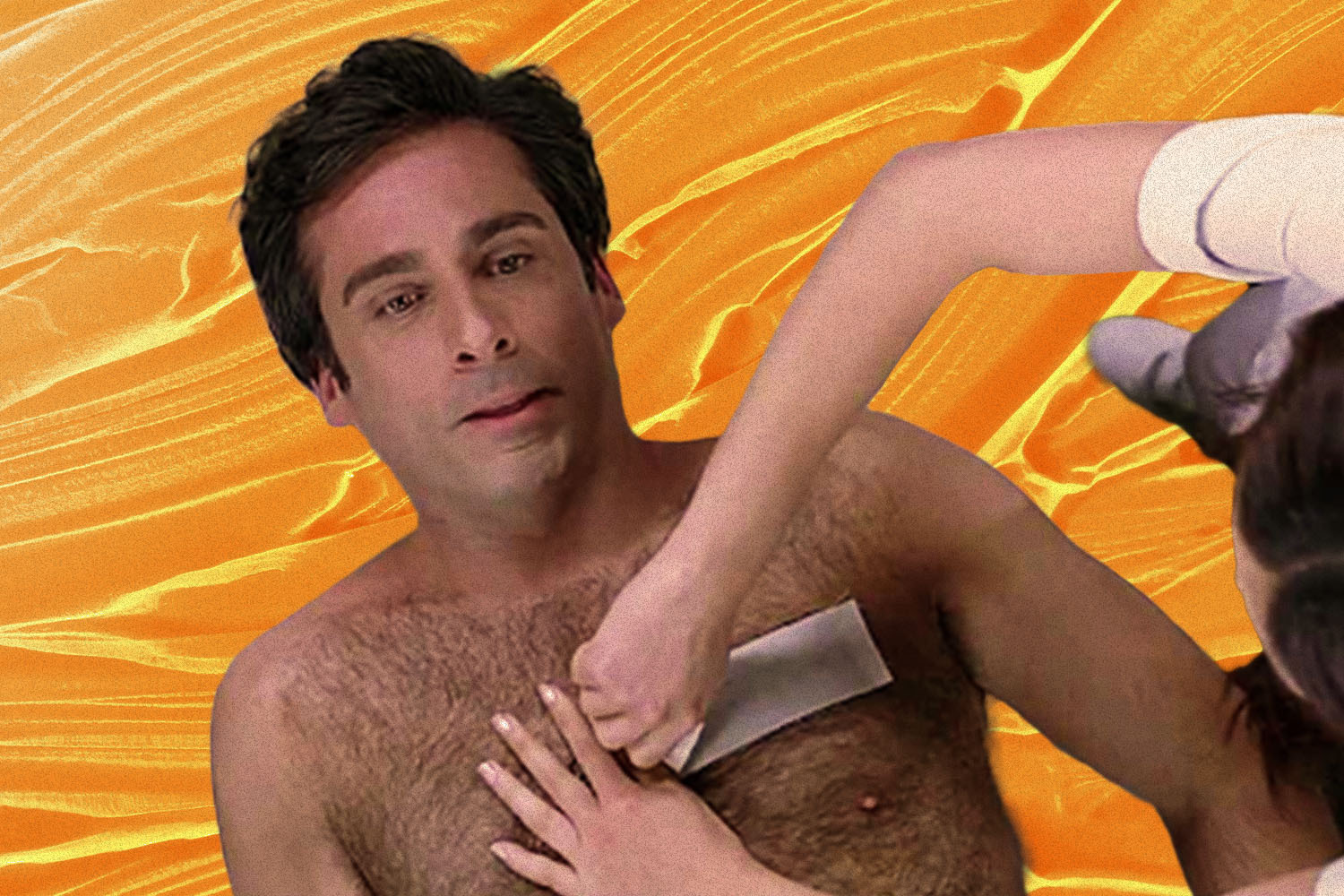Ah, crabs. The most retro member of the STI family. They bring a whisper of nostalgia to mind, don’t they? Like, honestly, when was the last time we even talked about these little buggers?
It’s entirely possible that the last time anyone actually heard about crabs in mainstream media was in that (circa 1999) episode of Sex and the City where the gals hit the Hamptons and a hot 20-something gives them to Charlotte. Don’t quote us on that, but it feels like this was the last major time this extremely common STI got any sort of media attention. (And it was a pretty shame-y and rude representation, which, unfortunately, wasn’t an uncommon theme in America’s most popular show about sex.)
Which leads us to the question: If we’re not hearing about crabs anymore, are crabs no longer an issue?
Dr. Felice Gersh, (she/her), OB/GYN and director of the Integrative Medical Group of Irvine in Irvine, CA and the author of Menopause: 50 Things You Need to Know, says that the most likely reason crabs have fallen out of the cultural zeitgeist has a lot to do with how not-serious they are. “They can be self-diagnosed and self-treated, so medical care is usually not involved with the cases and no one is keeping count. It is not a reportable STI, like [gonorrhea] and chlamydia are.” Basically, people have lost interest because crabs are, for all intents and purposes, kind of NBD.
That said, crabs are not an eradicated issue. They are still around doing their thing, but they have been on the decline. A study from one STI clinic found a 60% decline in the proportion of crabs from 1997 to 2003. Dr. Ina Park MD, MS, (she/her), a professor at the Department of Family and Community Medicine at UCSF School of Medicine and author of Strange Bedfellows: Adventures in the Science History and Surprising Secrets of STDs, says she personally hasn’t seen crabs in her clinic in 20 years.
So, they’re (officially) not as pervasive as they once were, but that doesn’t mean we shouldn’t want to know what they are and how the fuck to get rid of them in a safe way. Yes, they can be self-treated at home, (and this may partially account for their not showing up in studies) but they’re definitely still crawling around, doing their thing.
What even are crabs?
It definitely seems like there’s a lot of misunderstanding and misinformation out there about crabs and what they are. So, we asked Dr. Park, the world’s resident STI research expert, to give us the lowdown on these little fuckers:
“Crabs are actually a form of lice; their scientific name is Phthirus pubis, and as the name implies, these lice affect hair in the pubic region. There are actually three types of lice that affect humans: body lice, head lice and pubic lice. They are all different species, and each has its preferred habitat and hair texture. So you won’t typically find head lice in the pubic hair, or vice versa.”
There you have it. In a nutshell: Crabs are just lice that love your junk hair. They’re not your classic STI, they’re an external infestation.
Dr. Evan Goldstein, (he/him) a sexual health and wellness expert and founder of Bespoke Surgical, says it’s important to note that while crabs are usually genitally bound, this isn’t always the case: “They may also be found in other areas that have similar hair, like the armpits, legs, etc.”
How do you get crabs in the first place?
Crabs are transmitted by having close intimate contact with someone who has crabs. This is why they’re considered an STI. Your pubic hair rubs up against the infected pubic hair of a partner and the lice say, “New ground, boys! Let’s go!” and latch on to the new host.
They’re incredibly easy to get. According to Planned Parenthood, about 3 million people get crabs in the United States each year — and when someone has them, it isn’t a luck-of-the-draw kind of thing on whether you’ll catch them, too. If you’re exposed to crabs, there is a 95 percent transmission rate.
Dr. Goldstein says that while sex is usually the culprit for transmission, you can also get crabs through infested bedsheets, towels and clothes. Basically, they’re just like regular lice, only more into living near your junk.
How to know if you’ve caught the bug(s)
Most STIs are asymptomatic a lot of the time, requiring regular STI testing to know your status. Not so with crabs, folks. How will you know you have them? Oh, you’ll know.
According to Dr. Goldstein, “Itching is the most common symptom, followed by being able to see either the eggs or the crabs themselves, crawling around and burrowing themselves in their new home.” (Yes, we are all simply loving the visuals here.)
How to treat them
Okay, so you have some new friends scurrying around your pubes and want to burn them away with the fire of a thousand suns.
Fortunately, treating crabs is extremely easy and can be done in the comfort of your own home. Dr. Park says you can get lice-killing, 1% permethrin lotion at any local pharmacy. Just as you can buy anti-lice shampoo for the hair on your head, so too can you get anti-lice shampoo for your pubes. It’s all pretty straightforward, though Dr. Goldstein points out that you may need to do the treatment on repeat for 9 to 10 days to really get the little bastards.
Now, if the over-the-counter options don’t kill the lice, Gersh says there is a nuclear option. “If they don’t resolve the problem, then prescription pills or lotions can be used, but these are more toxic. The most common lotion used is Lindane, brand name Kwell,” she explains. “When possible, these prescription options should be avoided due to their significant neurotoxicity.” Basically, this is the last thing you’d want to do and only if all other treatments have failed.
You’ll also need to let any partners you’ve had know that you’ve gotten crabs, as the likelihood of their having been infected is extremely high and crabs obviously aren’t fun to deal with.
And finally, be sure to wash all your sheets, linens and clothes with very, very hot water to kill off any uninvited guests that may have set up camp there. And that’s about it. Bing, bang, dead lice.
How to prevent crabs
And finally, the question we’ve all been asking ourselves: If I shave off all the hair on my dong/vulva, will that make me a less likely target for unwanted pubic houseguests?
Dr. Park says this is actually quite an effective prevention method. “Shaving or waxing all your hair off would be an effective way to prevent pubic lice,” she explains. “Pubic deforestation through hair removal is certainly the reason for the [overall] decline in crabs.”
That said, it’s important to note that removing your pubic hair can prevent crabs, but it won’t treat crabs. “The crabs themselves will just migrate to other regions and/or they can survive on very short hair or stalks,” Dr. Goldstein says. “Most people will do formal treatments and then can definitely shave or wax to offset any residual egg infestation.” So, if you’ve already been infected, you still need to be treated with an over-the-counter anti-lice treatment.
Lastly, removal of all your pubic hair has other consequences when it comes to other STIs. Studies have shown that STI transmission and pubic hair removal have a positive correlation. This happens because when we shave or wax our pubic hair, we leave behind micro-abrasions, often unseen by the naked eye. In these instances, it can make it more likely to catch another STI.
Experts agree that the safest way to remove unwanted pubic hair is with a pair of clean, sharp scissors. Essentially, yeah, removing your pubic hair will prevent crabs, but it puts you at risk for a whole host of other, more dangerous STIs. At the end of the day, what you do with your body (and your bush) is your choice. Just be sure your method of hair removal (if any) is as sanitary as possible.
And as for crabs, they may no longer be a thing, but they are still out there doing their thing. Consider yourself warned.
Whether you’re looking to get into shape, or just get out of a funk, The Charge has got you covered. Sign up for our new wellness newsletter today.


























